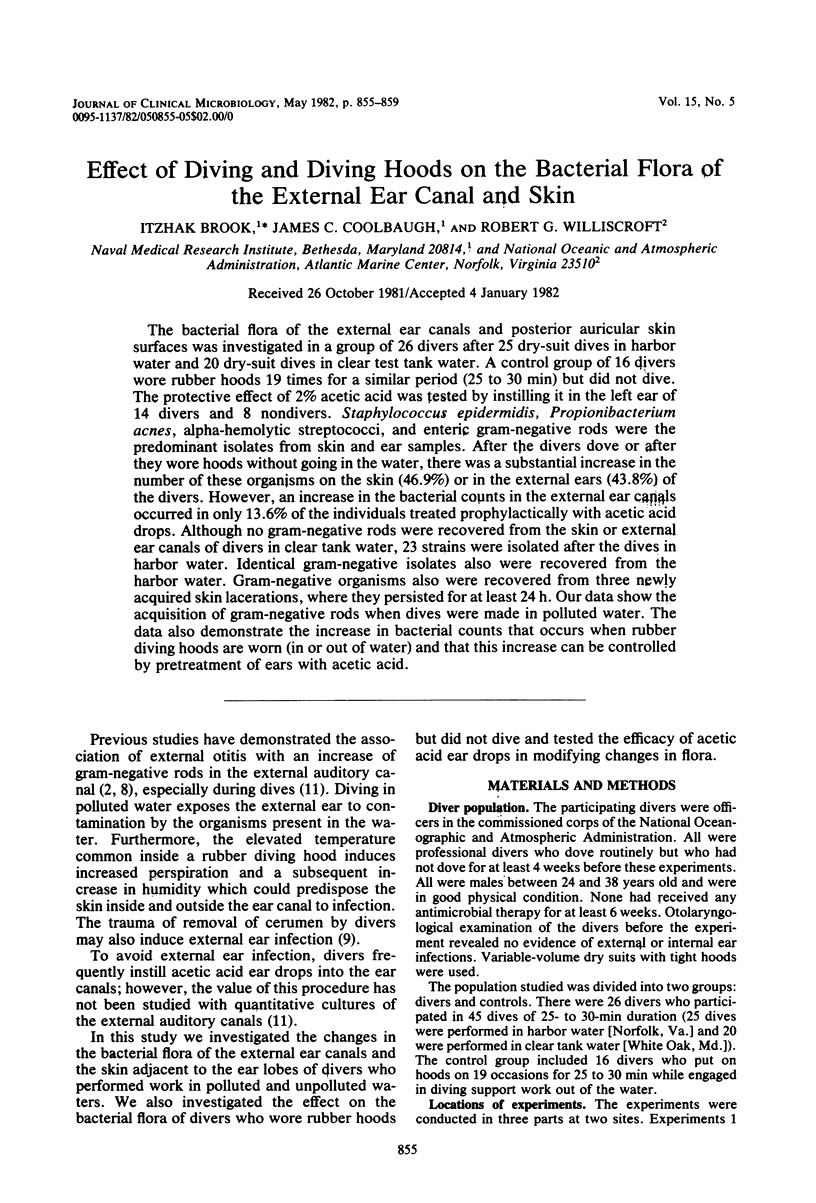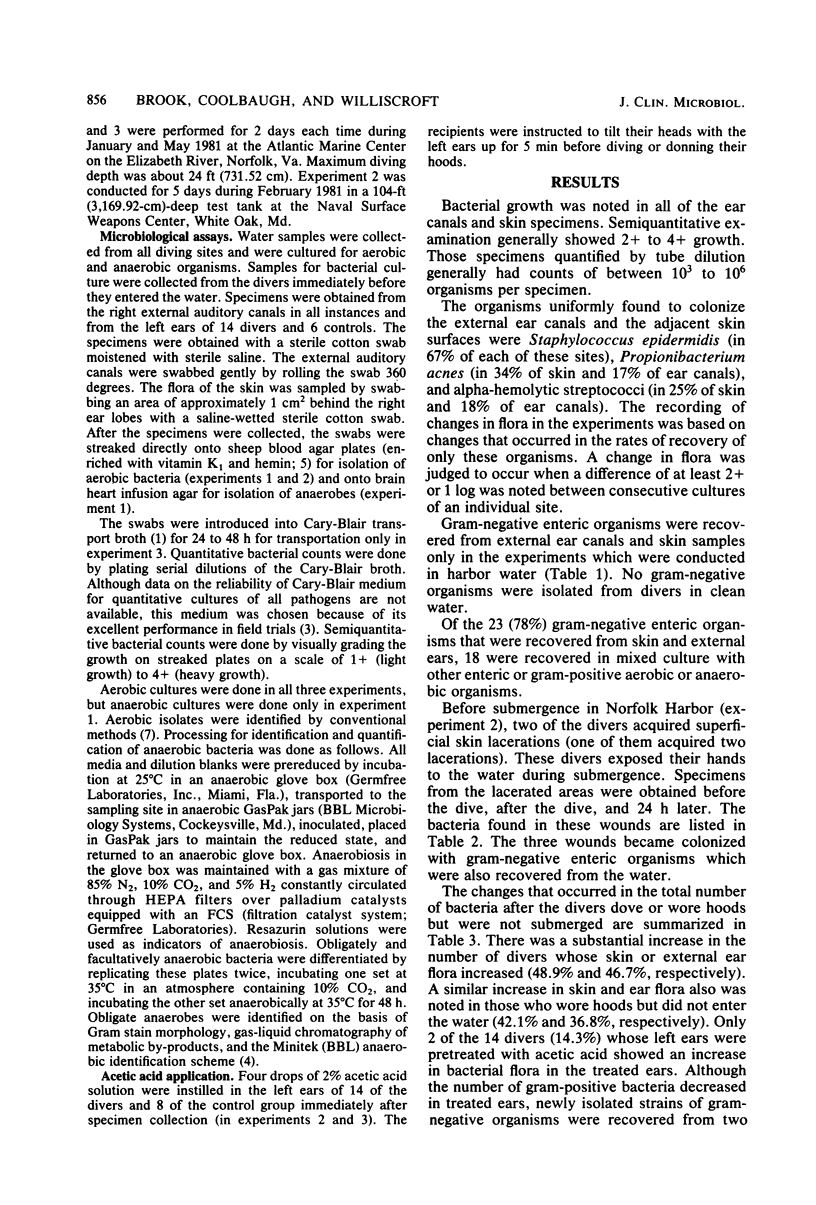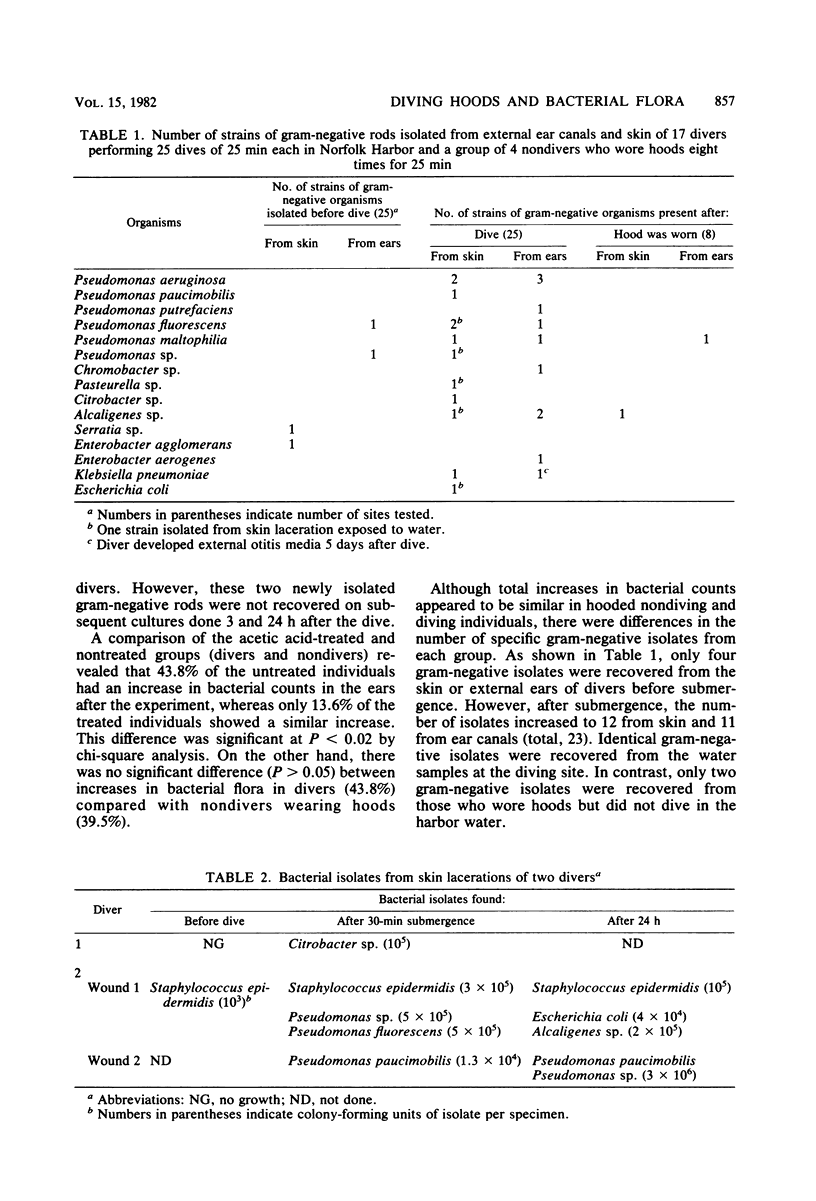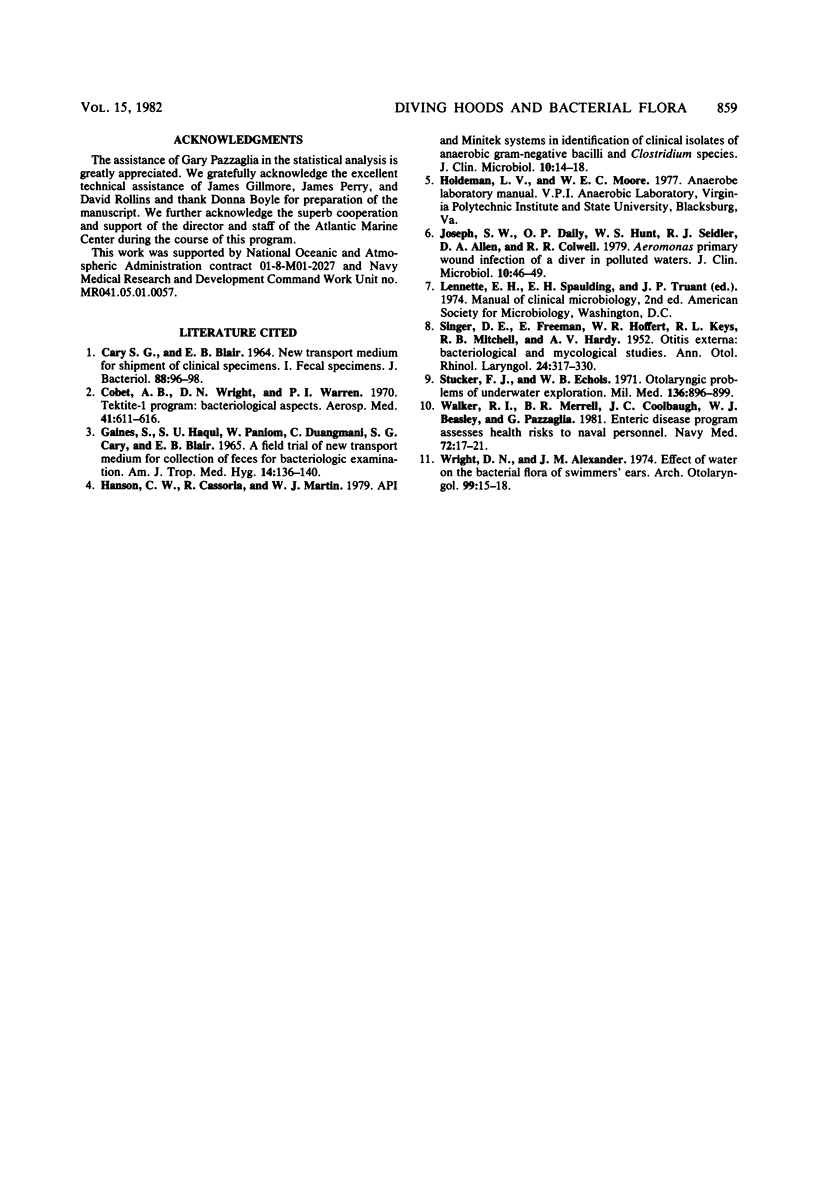Abstract
The bacterial flora of the external ear canals and posterior auricular skin surfaces were investigated in a group of 26 divers after 25 dry-suit dives in harbor water and 20 dry-suit dives in clear test tank test. A control group of 16 divers wore rubber hoods 19 times for a similar period (25 to 30 min) but did not dive. The protective effect of 2% acetic acid was tested by instilling it in the left ear of 14 divers and 8 nondivers. Staphylococcus epidermidis, Propionibacterium acnes, alpha-hemolytic streptococci, and enteric gram-negative rods were the predominant isolates from skin and ear samples. After the divers dove or after they wore hoods without going in the water, there was a substantial increase in the number of these organisms on the skin (46.9%) or in the external ears (43.8%) of the divers. However, an increase in the bacterial counts in the external ear canals occurred in only 13.6% of the individuals treated prophylactically with acetic acid drops. Although no gram-negative rods were recovered from the skin or external ear canals of divers in clear tank water, 23 strains were isolated after the dives in harbor water. Identical gram-negative isolates also were recovered from the harbor water. Gram-negative organisms also were recovered from three newly acquired skin lacerations, where they persisted for at least 24 h. Our data show the acquisition of gram-negative rods when dives were made in polluted water. The data also demonstrate the increase in bacterial counts that occurs when rubber diving rods are worn (in or out of water) and that this increase can be controlled by pretreatment of ears with acetic acid.
Full text
PDF




Selected References
These references are in PubMed. This may not be the complete list of references from this article.
- CARY S. G., BLAIR E. B. NEW TRANSPORT MEDIUM FOR SHIPMENT OF CLINICAL SPECIMENS. I. FECAL SPECIMENS. J Bacteriol. 1964 Jul;88:96–98. doi: 10.1128/jb.88.1.96-98.1964. [DOI] [PMC free article] [PubMed] [Google Scholar]
- Cobet A. B., Wright D. N., Warren P. I. Tektite-I program: bacteriological aspects. Aerosp Med. 1970 Jun;41(6):611–616. [PubMed] [Google Scholar]
- Hanson C. W., Cassorla R., Martin W. J. API and Minitek systems in identification of clinical isolates of anaerobic gram-negative bacilli and Clostridium species. J Clin Microbiol. 1979 Jul;10(1):14–18. doi: 10.1128/jcm.10.1.14-18.1979. [DOI] [PMC free article] [PubMed] [Google Scholar]
- Joseph S. W., Daily O. P., Hunt W. S., Seidler R. J., Allen D. A., Colwell R. R. Aeromonas primary wound infection of a diver in polluted waters. J Clin Microbiol. 1979 Jul;10(1):46–49. doi: 10.1128/jcm.10.1.46-49.1979. [DOI] [PMC free article] [PubMed] [Google Scholar]
- SINGER D. E., FREEMAN E., HOFFERT W. R., KEYS R. J., MITCHELL R. B., HARDY A. V. Otitis externa; bacteriological and mycological studies. Ann Otol Rhinol Laryngol. 1952 Jun;61(2):317–330. doi: 10.1177/000348945206100201. [DOI] [PubMed] [Google Scholar]
- Stucker F. J., Echols W. B. Otolaryngic problems of underwater exploration. Mil Med. 1971 Dec;136(12):896–899. [PubMed] [Google Scholar]
- Walker R. I., Merrell B. R., Coolbaugh J. C., Beasley W. J., Pazzaglia G. Enteric disease program assesses health risks to naval personnel. US Navy Med. 1981 Jan;72(1):17–21. [PubMed] [Google Scholar]
- Wright D. N., Alexander J. M. Effect of water on the bacterial flora of swimmers' ears. Arch Otolaryngol. 1974 Jan;99(1):15–18. doi: 10.1001/archotol.1974.00780030019003. [DOI] [PubMed] [Google Scholar]


